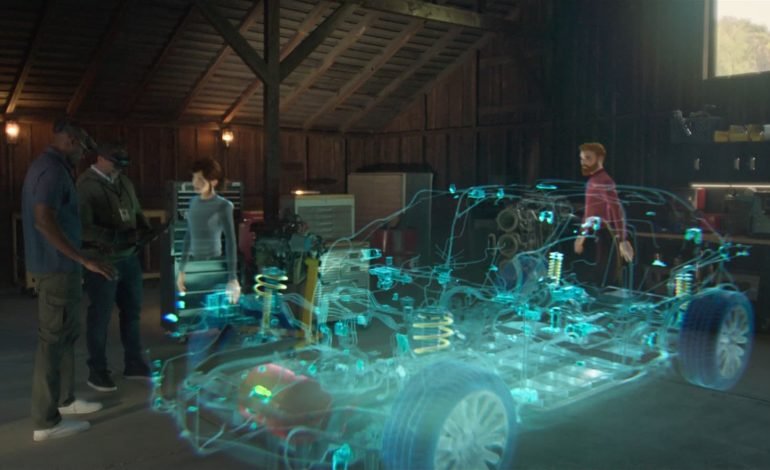Augmented reality (AR) has become a popular technology that overlays digital information onto the real world. AR is used in a variety of applications, from gaming to education, and has changed the way we interact with technology. The technology relies on a number of components, including sensors, cameras, and displays. One key component that plays a critical role in AR is the mesh.
The mesh in augmented reality is a 3D model that represents the physical environment. It is created by scanning the real world using sensors and cameras and then processing the data to create a digital representation. The mesh is a crucial component of AR because it allows digital objects to be placed and anchored in the real world. In this article, we will explore in depth what the mesh is and how it works in augmented reality applications.

What is the Mesh in Augmented Reality?
Augmented reality (AR) is a form of technology which overlays virtual objects on real-world images. The “mesh” is a critical component of AR and is responsible for creating 3D objects that are visible in the real world. The mesh is essentially a network of connected points that create the shape of an object. It is the foundation upon which the virtual object is built.
How the Mesh is Used in Augmented Reality
The mesh is the basis of any 3D object in augmented reality. A mesh is created by connecting a series of points in three-dimensional space. These points are then used to define the shape, size, and orientation of the object. This mesh is then used to create a 3D image of the object that can be seen in the real world. The mesh also helps to ensure that the object appears in the correct perspective, as if it were actually in the environment.
Once the mesh has been created, it can be used to create a variety of different virtual objects. These objects can range from simple shapes to more complex objects. For example, the mesh can be used to create buildings, furniture, vehicles, animals, and more. The mesh can also be used to create interactive objects such as games or puzzles.
Creating a Mesh for Augmented Reality
Creating a mesh for augmented reality requires a good understanding of 3D modeling and computer graphics. The process begins by creating a 3D model of the object that will be used in the augmented reality application. This model is then used to create the mesh. The mesh is created by connecting a series of points that define the shape, size, and orientation of the object. Once the mesh is created, it can be used to create a 3D image of the object that can be seen in the real world.
The mesh can also be used to create interactive objects such as games or puzzles. This is accomplished by adding additional points to the mesh that define the interaction of the object. For example, if a user were to move their hand over a virtual object, the mesh would be used to determine the movement of the object in response.
The mesh is a critical component of augmented reality and is responsible for creating 3D objects that are visible in the real world. It is used to create a 3D image of an object and to create interactive objects. Creating a mesh requires a good understanding of 3D modeling and computer graphics.
Frequently Asked Questions
Augmented reality (AR) is a technology that allows users to interact with the physical world in a new way, by overlaying digital elements on top of the real world. The mesh is a crucial component of AR, allowing the physical environment to be mapped in a way that AR applications can interact with.
What does the mesh do in augmented reality?
The mesh is a 3D environment map that allows AR applications to interact with the real world. It is created by scanning the physical environment with a device, such as a smartphone or tablet, which captures millions of 3D points to form a 3D map of the environment. This map can then be used by AR applications to accurately overlay digital content on top of the physical environment.
The mesh also allows AR applications to understand the physical environment and to respond to user interaction. For example, an AR game could use the mesh to detect a user’s movements and respond accordingly. The mesh is also used to track objects in the physical environment, allowing users to interact with them in an AR experience.
In conclusion, the mesh plays an essential role in creating a seamless augmented reality experience. It serves as the foundation for the digital objects to interact with the real world and provides accurate tracking and positioning of AR objects. Without the mesh, the AR experience would be disjointed and unrealistic, making it difficult for users to immerse themselves in the augmented environment.
As the technology for AR continues to advance, the importance of the mesh will only increase. As such, developers and designers must continue to refine their understanding of how the mesh works and how they can optimize its use to create more compelling AR experiences. With the right approach, the mesh can be a powerful tool for creating truly immersive and engaging augmented reality applications that push the boundaries of what is possible.


